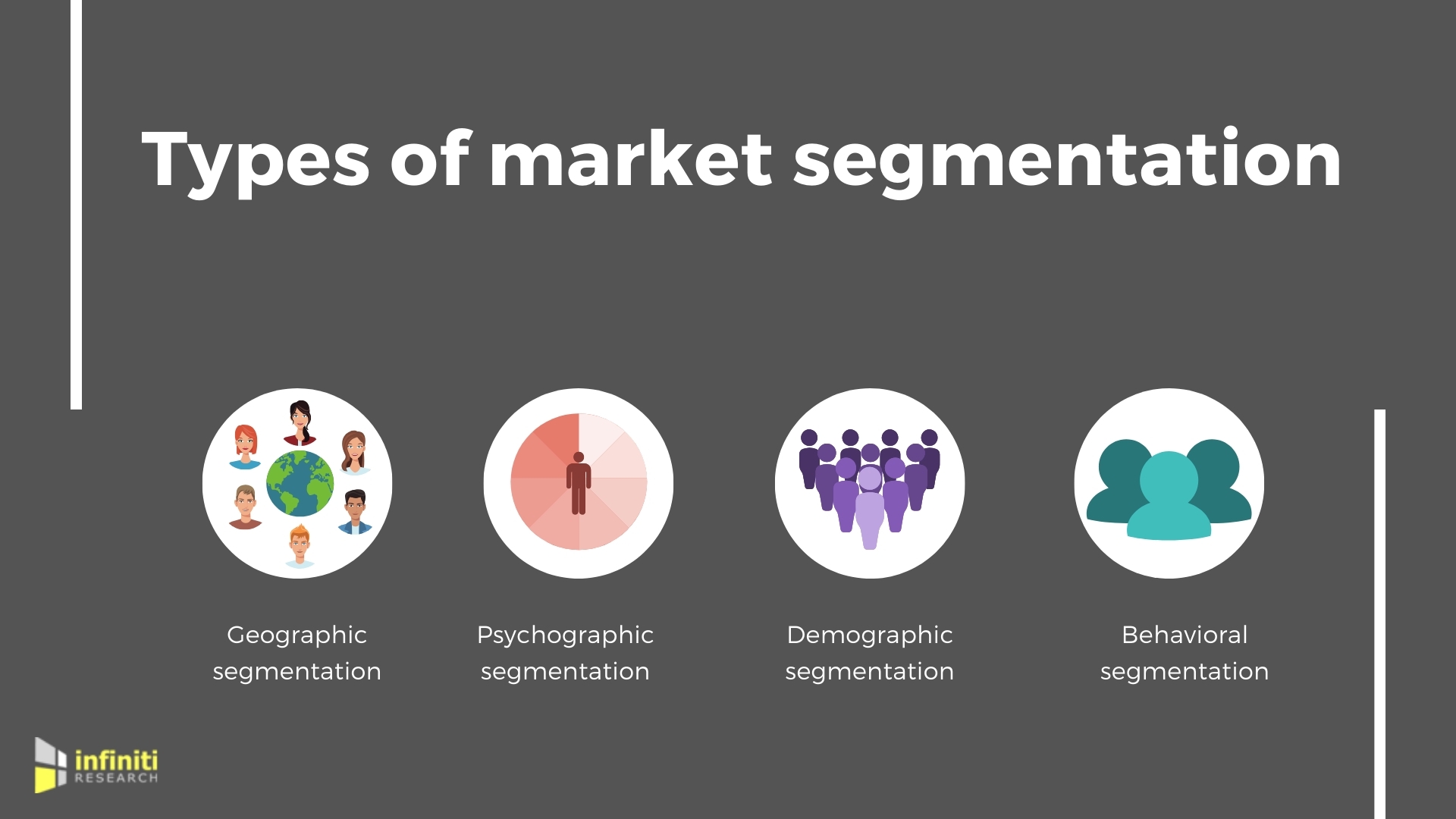Types of Market Segmentation

Market segmentation can be carried out using various criteria, resulting in different types of segmentation. The common types of market segmentation include:
-
Demographic Segmentation:
- Examples: Age, gender, income, education, occupation, marital status.
- Usage: Useful for products or services where consumer needs and preferences vary based on demographic factors.
-
Geographic Segmentation:
- Examples: Country, region, city, climate.
- Usage: Effective for businesses that serve specific geographic areas with unique needs or preferences.
-
Psychographic Segmentation:
- Examples: Lifestyle, values, attitudes, interests, personality traits.
- Usage: Useful when consumer behavior is influenced by psychological and emotional factors.
-
Behavioral Segmentation:
- Examples: Buying patterns, product usage, brand loyalty, decision-making processes.
- Usage: Helps understand and target consumers based on their behaviors and interactions with products or services.
-
Occasion-Based Segmentation:
- Examples: Special events, holidays, seasons.
- Usage: Applicable when consumer purchasing behavior is influenced by specific occasions or time periods.
-
Benefit Segmentation:
- Examples: Features, advantages, benefits sought by consumers.
- Usage: Focuses on the specific benefits or solutions that consumers are looking for in a product or service.
-
Usage Rate Segmentation:
- Examples: Heavy users, moderate users, light users.
- Usage: Identifies different levels of product usage among consumers, helping tailor marketing strategies accordingly.
-
Loyalty Segmentation:
- Examples: Brand loyalists, occasional buyers, switchers.
- Usage: Targets consumers based on their loyalty to a brand or product, allowing for specific retention or acquisition strategies.
-
Segmentation by Technology Adoption:
- Examples: Early adopters, mainstream adopters, laggards.
- Usage: Useful for industries where technology plays a significant role, identifying different stages of technology adoption among consumers.
-
Cultural Segmentation:
- Examples: Cultural values, beliefs, customs.
- Usage: Relevant when consumer behavior is deeply influenced by cultural factors, allowing businesses to tailor offerings accordingly.
-
Generational Segmentation:
- Examples: Baby boomers, Generation X, Millennials, Generation Z.
- Usage: Recognizes the unique characteristics and preferences of different generations, helping target marketing messages effectively.
-
B2B Segmentation:
- Examples: Industry type, company size, decision-making unit.
- Usage: Applied in business-to-business markets to understand the specific needs and characteristics of different businesses.
Selecting the most appropriate type of segmentation depends on the nature of the product or service, the industry, and the specific goals of the marketing strategy. Often, a combination of these segmentation types is used to create a comprehensive understanding of the target market.
Thank you.
